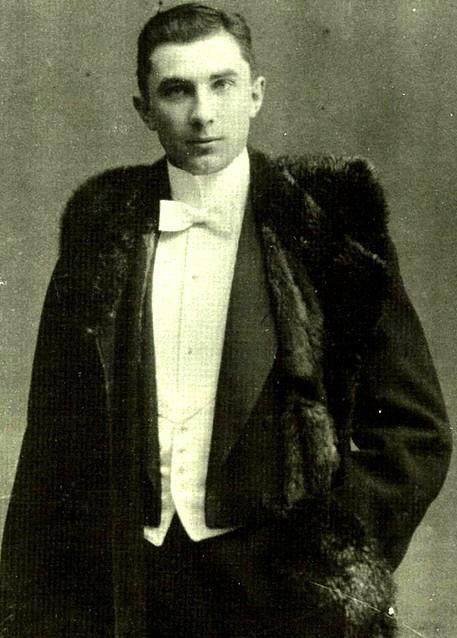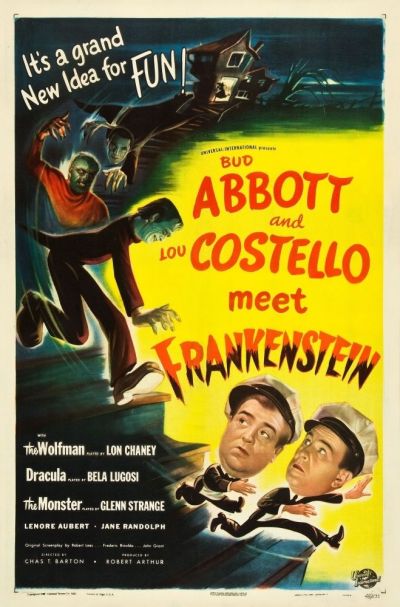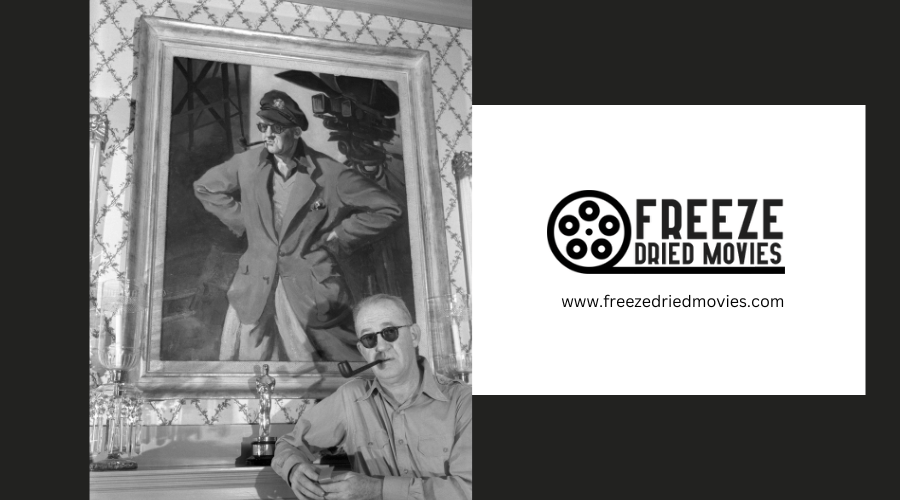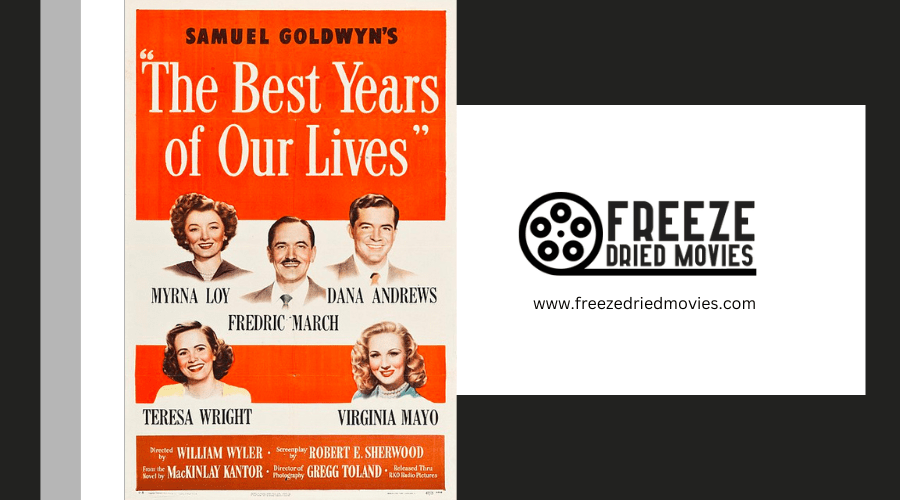What Was the Crossover Between Horror and Humor in Abbott and Costello Meet Frankenstein?

In the film 'Abbott and Costello Meet Frankenstein,' the blending of horror and humor is masterfully executed. Iconic figures such as Dracula and Frankenstein's monster maintain their frightening aura, while the comedic interplay of Abbott and Costello introduces a lighter tone. Through slapstick antics and exaggerated expressions, the duo skillfully transforms moments of fear into comedy, balancing the potential intensity of the horror with accessible humor.
This equilibrium between suspense and comedy not only enhanced the entertainment value but also paved the way for the horror-comedy genre in cinema. The film is a classic example of how to effectively combine fear with laughter to create a cohesive and enjoyable experience.
Iconic Monsters Meet Comedy

In 'Abbott and Costello Meet Frankenstein,' the film ingeniously combines classic horror with slapstick comedy. The iconic monsters—Dracula, played by Bela Lugosi; the Wolf Man, portrayed by Lon Chaney Jr.; and Frankenstein's monster, enacted by Glenn Strange—each maintain their menacing personas. However, their terrifying nature is humorously offset by the clumsy antics of Abbott and Costello. This juxtaposition not only preserves the integrity of the monsters within the horror tradition but also integrates them into comedic scenarios that elicit laughter.
This innovative crossover of genres demonstrates how horror and comedy can coexist, enriching both by blending eerie elements with lighthearted humor. The result is a pioneering hybrid genre that offers a unique, entertaining experience. 'Abbott and Costello Meet Frankenstein' showcases a successful fusion of fear and fun, proving the compatibility and dynamic range of horror and comedy.
The Genius of Bud and Lou
Bud Abbott and Lou Costello's unique comedic synergy elevated 'Abbott and Costello Meet Frankenstein' into a benchmark for the horror-comedy genre. Their performances extended beyond mere line delivery; they ingeniously melded humor with precise timing and reactions, creating scenes that resonate with audiences even today. Notable moments, such as the sliding candle scene and the costume party dispute, exemplify how they seamlessly integrated horror and comedy to craft genuinely amusing sequences that felt natural within the film's context.
The duo's skill in balancing the authentic portrayal of classic monsters with their comedic exchanges distinguishes this film. The audience experiences laughter intertwined with traditional horror elements, presented without overwhelming darkness. This fusion has established 'Abbott and Costello Meet Frankenstein' as an enduring favorite in horror-comedy.
Here is a brief overview of Abbott and Costello's impact on the film:
| Aspect | Description | Impact on Film |
|---|---|---|
| Comedic Chemistry | Exceptional timing and interaction | Enhances humor |
| Iconic Routines | Scenes like sliding candle, costume argument | Showcases comedic talent |
| Balance | Combination of horror with humor | Enhances genre fusion |
| Timeless Appeal | Universal humor transcending eras | Sustains audience interest |
Exploring their work, one can see how Abbott and Costello's innovative comedy not only defined but also advanced the horror-comedy genre significantly.
Crafting the Perfect Scream
In 'Abbott and Costello Meet Frankenstein', the art of crafting the perfect scream is realized through a seamless blend of terror and comedy. The film cleverly utilizes the screams of Abbott and Costello to transition from horror to humor, transforming encounters with classic monsters like Dracula and the Wolf Man into moments of comedy. The duo's exaggerated responses not only entertain but also enhance their comedic chemistry, turning each scream into a humorous highlight that's as amusing as it's spine-tingling.
The brilliance of these screams lies in their ability to subvert expectations. Thanks to precise timing and the ideal tone of the screams, audiences anticipate a scare but are met with laughter instead. This strategic manipulation of the atmosphere establishes the film as a pioneering example of genre fusion. Each scream is more than just a reaction; it's a thoughtfully designed punchline that complements the eerie context created by the legendary monsters.
Classic Creatures Reimagined
In 'Abbott and Costello Meet Frankenstein,' the film brilliantly merges classic horror with comedy, featuring iconic performances by Bela Lugosi, Lon Chaney Jr., and Glenn Strange as Dracula, the Wolf Man, and Frankenstein's monster. Abbott and Costello's comedic prowess introduces a playful twist to the narrative while preserving the menacing allure of these legendary monsters.

- Dracula, portrayed with suave charm by Lugosi, becomes entangled in humorous scenarios that highlight the contrast between his dignified persona and the slapstick situations.
- The Wolf Man experiences tormented transformations that are both chilling and amusing. His interactions with Lou add a layer of clumsy humor without undermining his fearsome nature.
- Frankenstein's monster appears formidable yet participates in visual gags, balancing the humor with his traditionally intimidating presence.
- The setting of eerie castles and moonlit nights provides a classic horror backdrop, effectively contrasting with the duo's comedic antics.
- The monsters' portrayal as menacing yet misunderstood adds depth, allowing for empathy and laughter, securing the film's status as a timeless classic.
This reimagining maintains the monsters' essential characteristics while seamlessly integrating them into a comedic context, illustrating the successful intersection of horror and humor in 'Abbott and Costello Meet Frankenstein.'
Laughter Amidst the Macabre
In the film 'Abbott and Costello Meet Frankenstein,' the combination of horror and humor crafts a memorable experience, where laughter emerges alongside the macabre. The movie cleverly juxtaposes the comedic talent of Abbott and Costello with classic monsters, transforming a traditional horror setting into one filled with humor and surprise. This blend not only entertains but also shifts the typical portrayal of monsters, presenting them as integral to the film's humor rather than mere figures of terror.
As viewers, we engage with a piece of cinematic history that skillfully interweaves fear and fun. The atmosphere is laden with horror elements, yet it's consistently lightened by witty dialogue and slapstick comedy. This results in scenes where suspenseful moments are seamlessly relieved by humor, such as a character unexpectedly encountering a revolving wall.
'Abbott and Costello Meet Frankenstein' is a trailblazing film in the horror-comedy genre. It has influenced countless films that seek to entertain audiences by mixing scares with laughter. Its innovative approach has made it a classic, and it continues to captivate viewers worldwide with its unique and entertaining take on horror and comedy.
The Role of Dracula and Wolfman
Bela Lugosi's portrayal of Dracula and Lon Chaney Jr. as the Wolf Man in 'Abbott and Costello Meet Frankenstein' masterfully blends horror and humor. Their performances encapsulate the iconic qualities of their characters while integrating seamlessly with the comedic elements of the film. Lugosi's Dracula is both hypnotic and menacing, adding a dark charisma that dominates his scenes. In contrast, Chaney Jr.'s depiction of the Wolf Man provides a palpable tension through his transformation scenes, adding depth to the film's lighter moments.
Key scenes demonstrate Dracula's chilling, aristocratic presence, cutting through the comedy and enhancing the film's atmosphere. Meanwhile, the Wolf Man's internal battle with his curse brings a tragic layer to the narrative, enriching the overall story arc. Together, their interactions with Abbott and Costello strike a balance between inducing fear and eliciting laughter without allowing one to overshadow the other.
This balance ensures that the viewer experiences a consistent, engaging mix of laughter and fright, leaving them both entertained and on edge throughout the film.
Timing in Comedy and Terror
The film 'Abbott and Costello Meet Frankenstein' masterfully blends comedy and terror, demonstrating the critical role of timing in enhancing the movie's dual-genre appeal. As Abbott and Lou navigate scenes populated with iconic horror figures, their impeccable comedic timing introduces humor right when the tension peaks, effectively balancing fear with laughter. This not only maintains the suspense inherent in horror but also enriches the comedic relief, ensuring the film remains engaging without undermining the horror elements.
Particularly in scenes where the duo interacts with monsters like Frankenstein's monster, the timing of their humor is pivotal. For instance, when Frankenstein's monster makes a threatening appearance, Costello's well-timed quip immediately diffuses the tension, eliciting laughter and alleviating fear momentarily. This not only showcases their comedic prowess but also their capability to seamlessly integrate into the horror genre without lessening its impact.
Through strategic timing, the film successfully preserves the integrity of both horror and comedy, allowing for a natural and enjoyable genre crossover. The result is a cohesive and captivating film that leverages the strengths of both genres, making 'Abbott and Costello Meet Frankenstein' a classic example of genre fusion done right.
Audience Reactions Then and Now
Upon its 1948 debut, *Abbott and Costello Meet Frankenstein* was met with enthusiastic responses, praised for its innovative blend of horror and comedy. Both historically and in contemporary times, the film is celebrated for skillfully balancing terror and humor through the dynamic performances of Lou Costello and Bud Abbott. The movie effectively utilizes its classic monsters to evoke both fear and laughter, securing its place as a unique and enduring piece of cinema.
Envision the atmosphere in a 1948 movie theater filled with excitement:
- The audience bursts into laughter as Lou Costello hilariously reacts to meeting Dracula for the first time.
- A collective gasp fills the room when Frankenstein's monster makes its imposing entrance, captivating the viewers with a mix of fear and fascination.
- Soft murmurs of surprise and delight ripple through the crowd as the Invisible Man unexpectedly appears, enhancing the film's whimsical chaos.
- Children grip their popcorn tighter during the thrilling yet comical chase sequences.
- Couples exchange amused glances, enjoying the clever interplay of horror and comedy.
Today, the film remains influential, continually captivating audiences with its timeless comedic elements and iconic scares. Abbott and Costello's approach to blending horror with humor remains a testament to their forward-thinking creativity and deep understanding of audience engagement.
Legacy of a Hybrid Genre
*Abbott and Costello Meet Frankenstein* was pivotal in establishing the horror-comedy genre, skillfully blending elements of horror and comedy to entertain audiences. This film set a precedent for integrating scares with humor, influencing subsequent classics like 'Beetlejuice' and 'Ghostbusters.' These films demonstrate the engaging nature of the genre, where fear and amusement are interwoven to enhance the viewer's experience.

The innovative approach of combining well-known horror figures with comedic interactions was initially seen as daring, but it proved to be highly effective. This successful formula demonstrated that horror and comedy could coexist and mutually enhance a film's appeal, paving the way for a new, hybrid genre that remains popular and continues to develop.
In contemporary cinema, traces of *Abbott and Costello Meet Frankenstein* are evident, as it not only merged two distinct genres but also fostered a creative space for filmmakers. This legacy continues to influence modern films, encouraging filmmakers to explore and innovate beyond traditional boundaries. The film's lasting impact encourages both filmmakers and audiences to embrace novelty and expect the unexpected.
Behind-the-Scenes Magic
During the production of *Abbott and Costello Meet Frankenstein*, the film uniquely melded horror and comedy, thanks to the presence of iconic actors such as Bela Lugosi and Lon Chaney Jr. These actors didn't merely lend their star power; they honored the lasting charm of their famous monstrous roles.
On set, the atmosphere was electric, infused with Bud Abbott and Lou Costello's impeccable comedic timing, which lightened the traditionally somber mood associated with their monstrous co-stars. Here's an insight into the behind-the-scenes dynamics:
- Bela Lugosi, portraying Dracula, cast an imposing figure, his cape creating long, eerie shadows that added a chilling effect, blending well with the comedic elements.
- Glenn Strange, as Frankenstein's monster, executed his role with precision. He showcased his experience in horror and maintained the film's balance of fear and fun.
- Makeup artists skillfully transformed actors into iconic monsters, demonstrating a fusion of horror aesthetics and artistic detail.
- The use of fog machines and strategic lighting contributed to an atmosphere that alternated between spooky and humorous, aligning with the film's genre-blending theme.
- The director adeptly managed the interplay of horror and comedy, ensuring that neither element overwhelmed the other.
This effective combination of horror icons and comedic talent created a distinctive film that delighted both audiences and critics.
Conclusion
The film 'Abbott and Costello Meet Frankenstein' skillfully combines elements of horror and humor. Featuring iconic monsters like Dracula, the Wolf Man, and Frankenstein's monster alongside the comedic duo Bud Abbott and Lou Costello, the movie uses slapstick comedy to transform potential scares into moments of laughter.
This blend not only entertained audiences but also paved the way for future films that mix horror with comedy. The enduring popularity of this movie demonstrates its significant impact on the genre, highlighting how effectively humor can coexist with horror elements.



